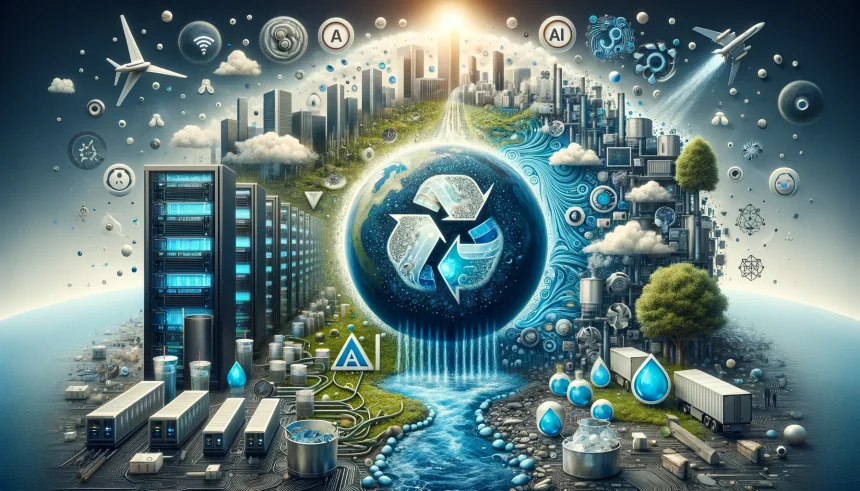Amid the burgeoning crescendo of AI innovation, a less-trodden path of discourse emerges, spotlighting an environmental conundrum tied to the lifeblood of our planet—water. The seismic wave of generative AI, with ChatGPT at its helm, while charting unknown territories of human-AI collaboration, concurrently unfurls a tapestry of ecological concerns, predominantly its thirst for water. A scholarly exposition by Shaolei Ren from the University of California, Riverside, pierces through the conventional narrative, spotlighting the voluminous water appetite of these AI leviathans. The revelation that ChatGPT alone guzzles approximately 500 milliliters of water per 10 to 50 interactions beckons a pause, especially against the canvas of its sprawling user diaspora.
The saga of AI’s water footprint is intricate, with data centers—AI’s very sinews—casting long shadows over water basins. These digital fortresses demand a deluge to cool their beating hearts, the servers, thereby ensnaring AI in the web of escalating technological water footprints.
This conundrum deepens as these data citadels often nestle within the parched embrace of water-scarce realms, laying bare a stark paradox. The voracious water appetite of data centers, juxtaposed against the arid whispers of their host environs, sketches a pressing tableau for sustainable aqua stewardship in the tech realm. As AI weaves itself deeper into the societal fabric, from automating customer interactions to spawning digital content, its aqueous footprint burgeons into an inescapable vortex of concern.
The torchbearers of AI innovation, behemoths like Microsoft and Alphabet, find themselves at this nexus, their data centers drawing deep from the well. Microsoft’s aqua ledger saw a swell, with its consumption surging by a third between 2021 and 2022, amounting to a staggering 1.7 billion gallons. Google’s digital domains, too, echoed this surge, with a 21% uptick in water usage in 2022, translating to 5.6 billion gallons. This escalating thirst trails the expanding horizons of AI’s capabilities, spotlighting an urgent need for infrastructural support that treads lightly on aquatic resources.
These tech titans, aware of the ripples their operations cast, have pledged allegiance to ambitious ecological charters. Microsoft’s vow to become a net positive water entity by 2030, and Google’s commitment to water stewardship, illuminate paths towards reconciliation with nature. Yet, the odyssey towards these laudable milestones is fraught with the brambles of ever-expanding AI demand.
The narrative extends beyond these corporate colossi to a mosaic of startups, research cloisters, and other tech evangelists, each adding their droplets to the swelling tide of AI’s water footprint. This collective endeavor casts a long shadow over our planet’s hydro-resources, summoning a clarion call to environmental custodians, policy architects, and the tech polity at large.
In the crucible of this challenge, innovation emerges as a beacon. Cutting-edge cooling paradigms that pivot away from water-guzzling systems, embracing ambient air or avant-garde phase-change materials, herald a new dawn of water-wise AI infrastructures. The quest for greener data sanctums, synergized with the embrace of renewable vigors, sketches a blueprint for an AI epoch that harmonizes with our aquatic heritage.
This confluence of AI’s boundless potential and environmental stewardship unfurls a complex tapestry, a labyrinth where innovation and sustainability must dance in tandem. As we chart this precarious tightrope, the imperative for a judicious blend of technological zeal and ecological wisdom has never been more paramount. It beckons a collective voyage towards a horizon where AI’s luminous promise does not eclipse the sanctity of our planet’s most precious resource—water.








